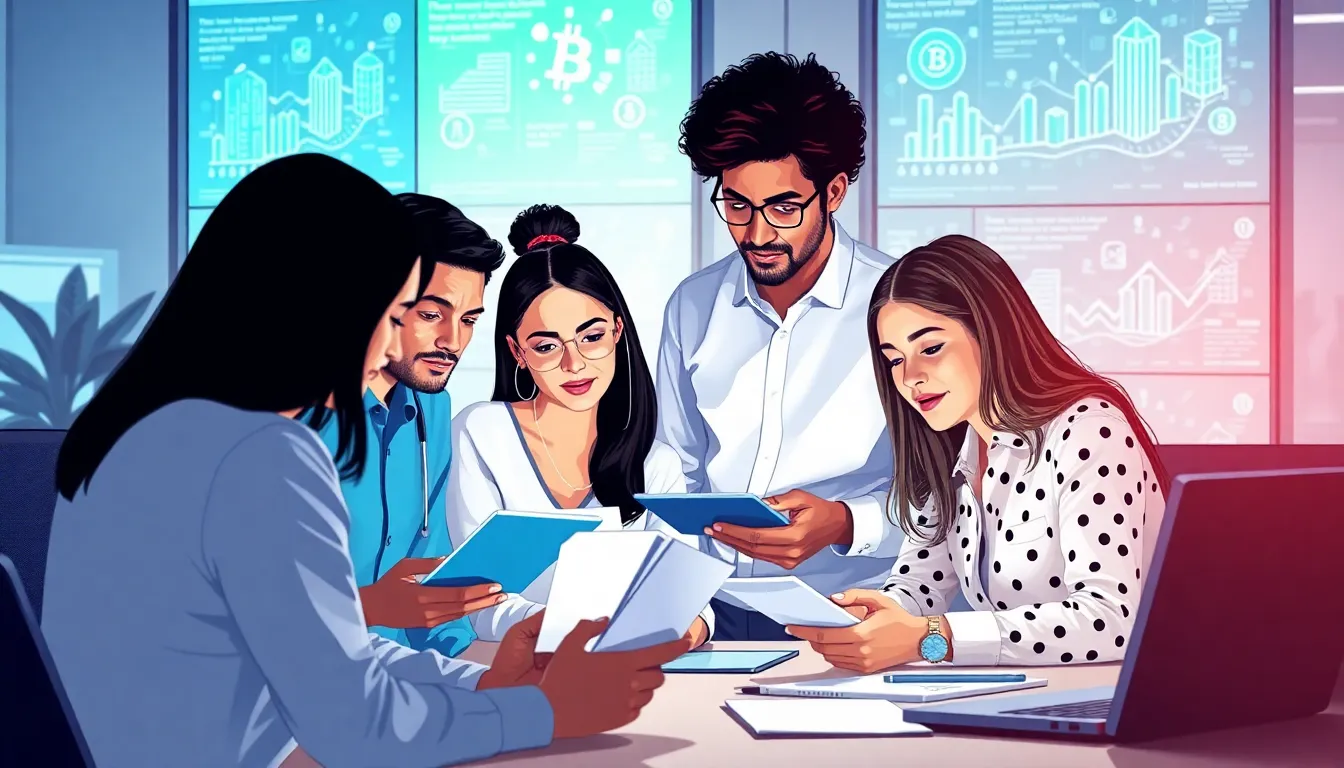Table of Contents
ToggleIn a world where tech jargon can sound like a foreign language, blockchain translation emerges as the unsung hero. Imagine trying to decode the latest crypto craze without a trusty guide. It’s like trying to explain TikTok to your grandma—confusing and slightly chaotic. But fear not, blockchain translation is here to bridge that gap, making complex concepts accessible to everyone.
Understanding Blockchain Translation
Blockchain translation simplifies complex technological concepts, enhancing accessibility for a wider audience. By clarifying intricate ideas, it makes blockchain and cryptocurrency more approachable.
Definition of Blockchain Translation
Blockchain translation involves converting technical terminology and jargon into understandable language. This process helps individuals grasp underlying principles without needing advanced technical knowledge. Translators often focus on accuracy, ensuring that essential meanings remain intact. They also adapt content to fit various cultural contexts, making it relatable for diverse audiences. A well-executed translation provides clarity, allowing users to disseminate information efficiently.
Importance of Blockchain Translation
Blockchain translation holds significant importance in today’s technology-driven world. It bridges gaps between experts and non-experts, fostering wider comprehension of blockchain technology. Simplified language encourages engagement from the general public and businesses alike. As more sectors explore blockchain applications, the need for streamlined information grows. By enhancing understanding, blockchain translation can drive adoption, facilitating smoother integration of this technology in everyday practices.
How Blockchain and Translation Intersect

Blockchain technology and translation work together to enhance understanding and accessibility. Their intersection highlights innovative solutions in the translation industry.
Smart Contracts in Translation
Smart contracts streamline translation workflows by automating processes. These contracts execute predefined terms once certain conditions are met. For instance, they ensure translators receive payment upon successful project completion. Efficiency rises as unnecessary intermediaries become obsolete. Additionally, smart contracts promote transparency, allowing all parties to track progress in real time. Reliability increases when clients trust that terms will be honored without dispute. Overall, smart contracts provide a foundation for faster and more secure translation services.
Decentralized Translation Networks
Decentralized translation networks revolutionize how translation services are delivered. These networks connect translators directly with clients, eliminating centralized control. Each participant contributes to the system’s accuracy and integrity. For example, multiple translators can review and refine projects collaboratively. This collective effort enhances the quality of translations. Moreover, token-based incentive systems ensure translators are rewarded fairly for their contributions. Such networks foster global collaboration, enabling diverse linguistic expertise to flourish. Ultimately, decentralized networks democratize translation and support a wide-ranging exchange of ideas and knowledge.
Challenges in Blockchain Translation
Blockchain translation faces several challenges that complicate effective communication across diverse audiences. These challenges include technical limitations and language diversity.
Technical Limitations
Complex terminology often poses significant barriers in blockchain translation. Terms like cryptographic hash, consensus algorithms, and decentralized finance confuse many translators. Understanding the underlying technology becomes vital for accurate interpretation. Inadequate knowledge of blockchain mechanics can lead to miscommunication and loss of meaning. Moreover, existing translation tools may not adapt well to the specificity of blockchain vocabulary, resulting in inconsistencies. Staying updated on innovations in the field proves essential for translators aiming to bridge gaps effectively.
Language Diversity and Accessibility
Language diversity further exacerbates the challenges in blockchain translation. With thousands of languages spoken worldwide, cultural nuances become crucial. Ensuring that translations resonate with local contexts demands both linguistic skill and cultural awareness. Moreover, many languages lack established terminology for blockchain concepts, complicating efforts to convey ideas accurately. Accessibility issues arise as well; not all communities may have access to high-quality translation resources. Addressing these hurdles ensures that critical blockchain information reaches a broader audience without compromising clarity.
Future of Blockchain Translation
Blockchain translation continues to evolve, reflecting advancements in the technology sector. Innovations are poised to reshape the landscape, improving accessibility and engagement for a broader audience.
Innovations on the Horizon
Decentralized autonomous organizations (DAOs) are emerging as new models for managing translation projects. These organizations empower translators by fostering collaboration while eliminating intermediaries, enhancing the quality of translations. Automated tools utilizing artificial intelligence are also advancing, offering real-time translation capabilities that adapt to local contexts. Furthermore, blockchain’s inherent transparency leads to greater trust in the translation process, ensuring clients receive accurate information. Smart contracts streamline the workflow, automating tasks and securing payments efficiently. These innovations promise to elevate blockchain translation, making it more efficient and user-friendly.
Potential Impact on Global Communication
Enhancements in blockchain translation can significantly impact global communication, bridging gaps between diverse cultures. Greater accessibility leads to broader participation in the blockchain community, allowing individuals and organizations across the world to engage. Increased accuracy in translations can help prevent misunderstandings that often arise from technical jargon. Moreover, providing localized terminology can ensure that specific cultural contexts are respected and understood. Facilitated communication channels help foster collaboration among experts globally, ultimately driving innovation in blockchain applications. With these advancements, blockchain translation may redefine how cultures interact in a technology-driven world.
Blockchain translation is essential for making complex technology accessible to a broader audience. By simplifying technical jargon and ensuring cultural relevance, it bridges the gap between experts and non-experts. The integration of innovative tools and decentralized networks is transforming the translation landscape, enhancing collaboration and efficiency.
As blockchain technology continues to evolve, the importance of high-quality translation resources cannot be overstated. These advancements promise to improve global communication and foster a more inclusive blockchain community. By prioritizing clarity and understanding, blockchain translation paves the way for greater participation and innovation in various sectors.







